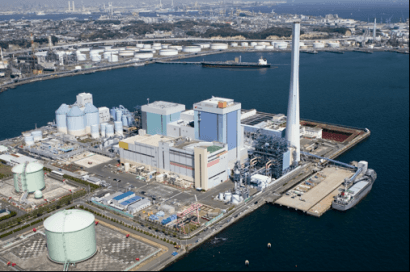
Now that several months have passed since the Great East Japan Earthquake, devastating tsunami, and Fukushima Daiichi nuclear plant disaster, signs are emerging of a country growing more dependent on fossil fuels. Despite calls for more renewable energy and some pending renewable-friendly legislation, fossil-fuel plants are being fired up like never before.
Prior to the earthquake, Japan obtained 27 percent of its electric power from nuclear facilities, about the same as from conventional thermal power plants burning coal (28 percent) and natural gas (26 percent). Now, with three-quarters of its nuclear plants out of service due to earthquake damage and scheduled maintenance, and with the growing possibility that many plants may be shut down permanently, up to a quarter of Japan’s electricity generating capacity is at risk.
Source: U.S. Energy Information Administration, Country Analysis Briefs (March 2011)
Replacing nuclear power with solar, wind, and geothermal technology is the logical next step, but years would be required to build and install the necessary equipment and to upgrade the energy infrastructure. Hydroelectric power, a historically significant and reliable source of electricity for Japan, could also help fill the nuclear void, although many months would be needed to develop new sites. And while energy conservation made significant inroads this past summer in reducing Japan’s energy dependence, conservation alone cannot make up for lost nuclear capacity.
Only one option remains that is economical, technologically proven, and readily available, and that is to start up or expand the use of existing power plants designed for coal, oil, and natural gas. Dozens of these plants are scattered throughout Japan, and although they represent aging technology by today’s high-tech standards, many can be brought on line in a matter of days or weeks.
According to the New York Times (Japan Quake is Causing Costly Shift to Fossil Fuels, August 19, 2011), the switch to coal was set in motion just a day after the Fukushima plant accident, when Tokyo Electric gave orders to fire up two half-century-old oil-fired generating units at the Yokosuka plant, 40 miles south of Tokyo. Since then, many other oil, gas, and coal generating stations have begun operation, some having been dormant for years.
Having an abundant supply of electricity is crucial to Japan’s economy – shortfalls could lead to production halts and even cause some manufacturers to relocate overseas. Unfortunately for Japan, the switch from nuclear to fossil fuels means that fuel expenses will rise, and Japan’s balance of trade may be adversely affected.
A potentially more serious problem for Japan and the rest of the world is that Japan will no longer be able to meet its greenhouse gas reduction commitments. Fossil-fuel combustion is the world’s primary source of greenhouse gases and one of the principal causes of climate change, and Japan’s increased reliance on fossil fuels will only exacerbate the problem.
Renewable energy other than hydroelectric power supplies just 2 percent of Japan’s electricity. Thus, even if renewable energy facilities were to double or triple, many more would be required to offset Japan’s growing reliance on fossil fuels. To achieve the steep growth curve required, urgent action is needed to make renewable energy more economically attractive and available throughout Japan, including more government incentives, subsidies, investment, research, and education. Japan can become the world’s leader in renewable energy, but it needs to act now.
[Photo inset: Isogo low emission coal-fired power plant. Courtesy of J-POWER]

